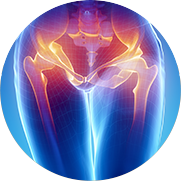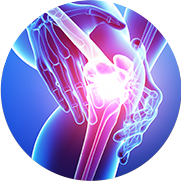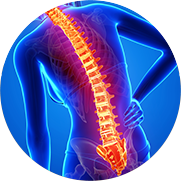What is Arthritis?
Arthritis means an inflamed joint. A joint normally consists of two cartilage-covered bone surfaces that glide smoothly against one another. When joints become inflamed, the joint swells and does not move smoothly. Over time, the gliding surface wears out. There are many types of arthritis. Rheumatoid arthritis is just one type. Wear and tear arthritis (osteoarthritis), gouty arthritis, and psoriatic arthritis are three other common types. Rheumatoid Arthritis is considered a systemic disease. That is, it can affect many parts of the body. Patients often awaken with stiff and swollen joints. Early on, many patients feel tired. Two thirds of patients with rheumatoid arthritis have wrist and hand problems.
Rheumatoid Arthritis of the Hand
Rheumatoid arthritis affects the cells that lubricate and line joints. This tissue – synovium- becomes inflamed and swollen. The swollen tissues stretch supporting structures of the joints such as ligaments and tendons. As the support structures stretch out, the joints become deformed and unstable. The joint cartilage and bone erode. Often the joints feel hot and look red. Rheumatoid arthritis of the hand is most common in the wrist and knuckles. The disease is symmetric, thus what occurs in one hand usually occurs in the other.
Signs and symptoms of Rheumatoid Arthritis of the Hand
While stiffness, swelling, and pain are symptoms common to all forms of arthritis, there are some symptoms that are classic features of rheumatoid arthritis. They are:
- Firm nodules along fingers or the elbow
- Soft lump on the back of the hand that moves as the fingers straighten
- Angulation or collapse of fingers
- Sudden inability to straighten or bend a finger because of a tendon rupture
- Deformity in which the middle finger joint becomes bent
- Deformity where the end of the finger is bent and the middle joint over extends
- Prominent bones in the wrist
In addition, patients with rheumatoid arthritis often have problems with numbness and tingling in their hand (carpal tunnel syndrome) because the swelling of the tendons causes pressure on the adjacent nerve. They may make a squeaky sound as they move joints (crepitus) and sometimes the joints snap or lock because of the swelling.
How arthritis is diagnosed
The diagnosis of rheumatoid arthritis is made based on clinical examination, x-rays, and lab tests. Your doctor will ask questions about your symptoms and how the disease has affected your activities. Rheumatoid arthritis may have a hereditary component, thus your physician will ask whether other family members have had rheumatoid arthritis or symptoms similar to yours. Your doctor will do a detailed examination of your hands. The clinical appearance helps to diagnose the specific type of arthritis. X-rays are often helpful; certain findings are characteristic for rheumatoid arthritis. These findings include swelling of non-bony structures, joint space narrowing, decreased bone density, and erosions near joints. There are several blood tests that are often ordered to confirm the clinical diagnosis. These are the rheumatoid factor, sedimentation rate and sometimes the anti-CCP (cyclic citrullinated peptide). MRI- a special imaging study – has also been used to help confirm the diagnosis.
Treatment of Rheumatoid Arthritis
Treatment for rheumatoid arthritis aims to decrease inflammation, relieve pain and maintain function. While there is no cure for rheumatoid arthritis, medications are available that slow the progression of the disease. Optimal care involves a team approach among the patient, physicians, and therapists. The care of the rheumatoid patient requires not only a hand surgeon but also a hand therapist, rheumatologist, and the patient’s primary care physician. The rheumatologist is often the physician that monitors and decides the specific type of medicine that is felt to be the most effective for the patient’s stage in the disease process.
The hand therapist will provide instruction on how to use your hands in ways that help relieve pain and protect joints. Therapists also can provide exercises, splints, and adaptive devices to help you cope with activities of daily living.
Rheumatoid arthritis can be a progressive disease. Surgical interventions need to be appropriately timed in order to maximize function and minimize deformity. In certain cases, preventive surgery may be recommended. Preventative surgery may include removing nodules, decreasing pressure on joints and tendons by removing inflamed tissue, or removing bone spurs that may rub on tendons or ligaments. If a tendon ruptures, a hand surgeon may be able to repair the tendon with a tendon transfer or graft.
There are several types of procedures to treat joints affected by rheumatoid arthritis, including removal of inflamed joint lining, joint replacements, and joint fusions. The specific procedure(s) chosen depends on many factors. These factors include the particular joints involved, the degree of damage present, and the condition of surrounding joints.
One of the most important factors in deciding the most appropriate surgical procedure is the needs of the patient. There are often many ways to treat hand deformities in rheumatoid arthritis. Your hand surgeon can help you decide on the most appropriate treatment for you.
© 2008 American Society for Surgery of the Hand. Developed by the ASSH Public Education Committee











